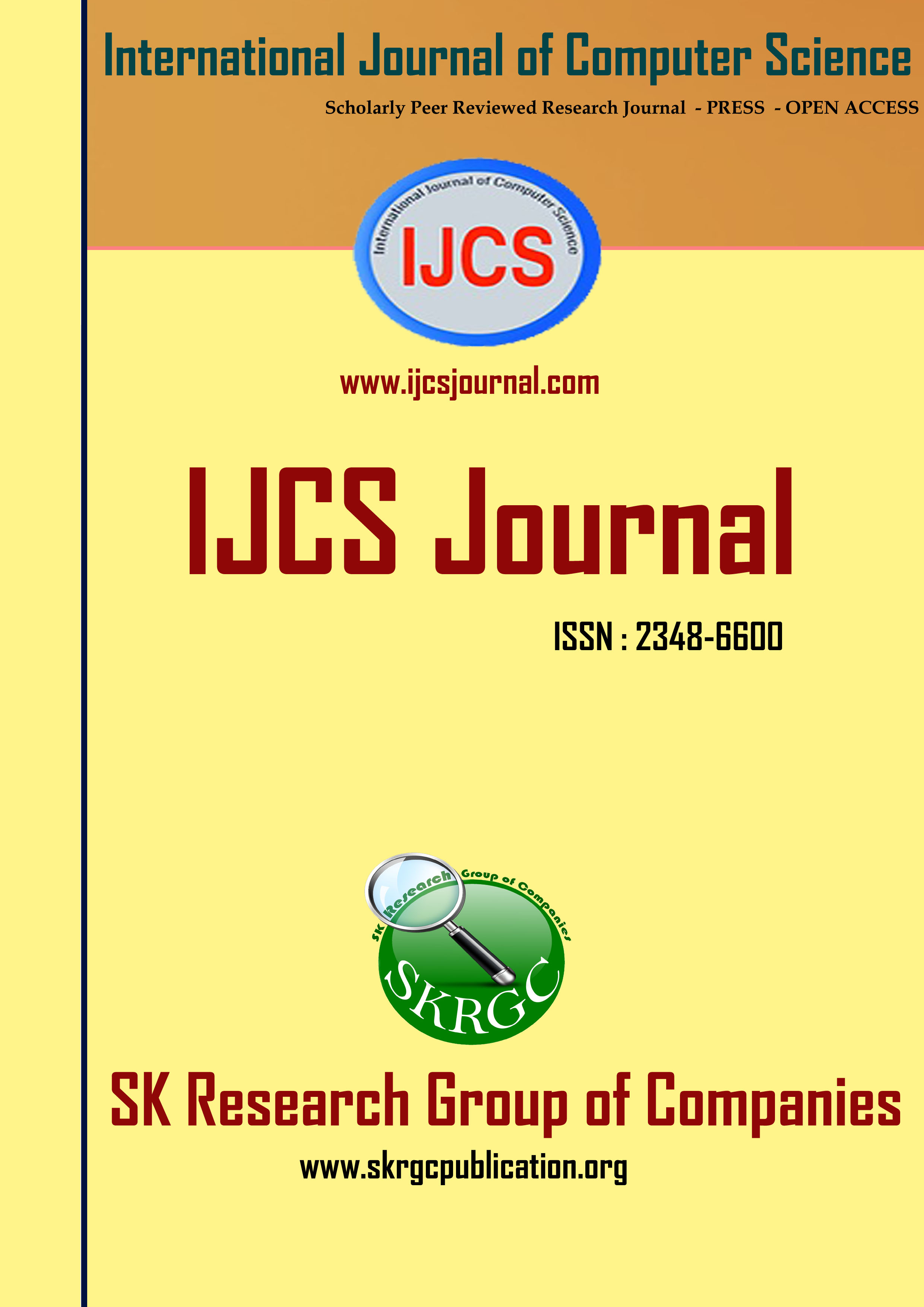A Study on Ad hoc wireless Networks
International Journal of Computer Science (IJCS) Published by SK Research Group of Companies (SKRGC).
Download this PDF format
Abstract
Wireless ad hoc networks (also referred to as packet radio networks and multi-hop radio networks) consist of mobile nodes communicating over a shared wireless channel. Contrary to cellular networks, where the nodes are restricted to communicate with a set of carefully placed base stations, in wireless ad hoc networks there are no base stations; any two nodes are allowed to communicate directly if they are close enough, and nodes must use multi-hop routing to deliver their packets to distant destinations. The lack of wired infrastructure, the nature of the wireless channel, and the mobility of the nodes create many challenging problems in the link, network, and higher layers of the OSI hierarchy. On the other hand, the lack of wired infrastructure and their topology make these networks ideal for many applications, from personal area networks, to search and rescue operations, to massive networks of millions of sensors. It is therefore expected that, once all the technological issues are solved, wireless ad hoc networks will become an integral part of our society's communication network infrastructure.
References
[1] C K Toh, Ad Hoc Mobile Wireless Networks, Prentice Hall Publishers , 2002.
[2] P. Gupta and P.R. Kumar. Capacity of wireless networks.IEEE Transactions on Information Theory, Volume 46,Issue2,March2000.
[3] Jinyang Li, Charles Blake, Douglas S. J. De Couto, Hu Imm Lee, and Robert Morris, Capacity of Ad Hoc Wireless Networks, in the proceedings of the 7th ACM International Conference on Mobile Computing and Networking, Rome, Italy, July 2001
[4] Wu S.L., Tseng Y.C., "Wireless Ad Hoc Networking, Auerbach Publications", 2007 ISBN 978-0-8493- 9254-2
[5] Muaz Niazi, Amir Hussain, Agent based Tools for Modeling and Simulation of Self-Organization in Peer-to-Peer, Ad Hoc and other Complex Networks, Feature Issue, IEEE Communications Magazine, Vol.47 No.3, March 2009, pp 163– 173.Paper
[6] Chun, B. G. and Baker, M. 2002. Evaluation of packet scheduling algorithms in mobile ad hoc networks. ACM SIGMOBILE Mobile Computing and Communications Review. 6 (3), (2002), 36-49.
[7] Faruque, M. N., Ahmad, S. N. and Kumar, M. 2011. Performance of QoSin Wireless Ad hoc Network for AODV Protocol using Fuzzy Based Techniques. International Journal of Electronics and Communication Technology. 2 (2) (2011).
[8] Gomathy, C. and Shanmugavel, S. 2005. Supporting QoS in MANET by Fuzzy Priority Scheduler and Performance Analysis with Multicast Routing Protocols. EURASIP Journal on Wireless Communication and Networking. 3 (2005), 426-436.
[9] Manoj, K., Sharma, S.C., Vijay, S. and Dixit, A. 2008. Performances Analysis of Wireless Ad-hoc Network Using OPNET Simulator. International Conference on Intelligent Systems and Networks. (ISN-08) ISTK Haryana. (2008), 267-270.
[10] Wu S.L. and Tseng Y.C. 2007. Wireless Ad Hoc Networking, Auerbach Publications. (2007). ISBN 978-0-8493- 9254-2 J. Clerk Maxwell, A Treatise on Electricity and Magnetism, 3rd ed., vol. 2. Oxford: Clarendon, 1892, pp.68–73.

